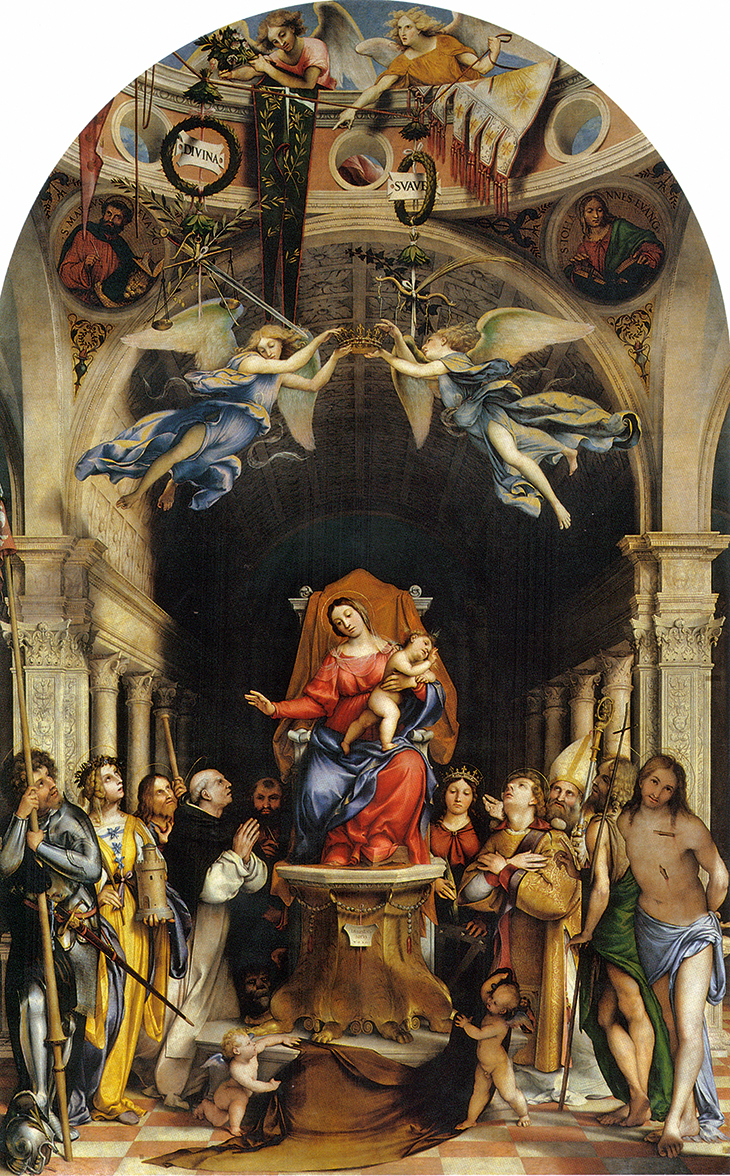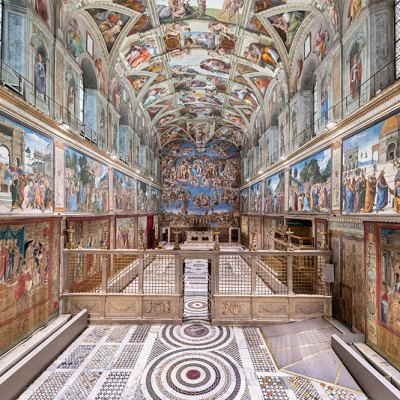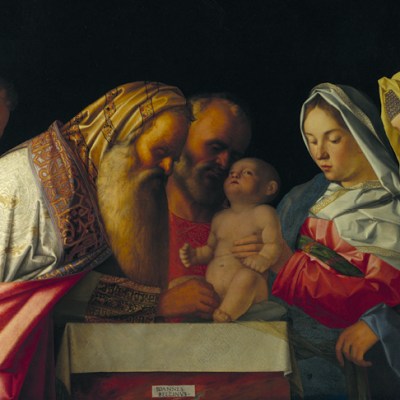Stephen Campbell is interested in works of art that have one thing in common: they were not produced for Rome, Florence or Venice. By the second half of the 16th century, these cities were associated with a hegemony of styles and a canon of works that were imitated and emulated by artists across the Italian peninsula. The paintings that absorb Campbell were instead executed for Bergamo or Messina, Loreto or Varallo, by artists such as Lorenzo Lotto or Polidoro da Caravaggio, Gaudenzio Ferrari or Girolamo Romanino. They demonstrate a self-consciousness about place that justifies their study, responding to local concerns, without becoming peripheral, in full knowledge of Raphael and Titian.
As in previous work on Cosmè Tura and Carlo Crivelli, Campbell is keen to construct a Renaissance without the biases towards the central Italian cities of Florence and Rome that characterise the work of Giorgio Vasari, an endeavour that consumes much of the first chapter. From the outset, he engages with problems of artistic mobility, encapsulated in the vexed vocabulary of ‘diffusion’ and ‘exchange’; ‘appropriation’ and ‘resistance’. But this is not a book about travelling artists; it is about style as what Campbell calls ‘a geopolitical symptom’. He explains: ‘At a certain point, in the mid-1500s, the options for “being modern” or for being “Roman” by following the ancients dramatically narrowed. A strict critical and canonical norm had been re-established in papal Rome itself, by an increasingly autocratic and politically embattled papacy, together with the neighbouring duchy of Florence.’
 The second chapter tackles the central concerns of the book and reveals the author’s critical understanding of ‘place’. Images, or at least those that hold Campbell’s attention, not only play a role in shaping a place, but respond to the ideological geography imposed on them by the likes of Vasari. Hence ‘geopolitics’ and not ‘geography of art’, for as he explains: ‘I am interested in the constructive role of art in shaping and mediating the relation to place, the spatial imaginary, of premodern historical subjects – and this is, inescapably, a political operation.’ Here, then, we are at the heart of the matter. A work such as the Colleoni Martinengo Altarpiece, made by Lorenzo Lotto for the high altar of Santi Domenico e Stefano between 1513–16, is especially evocative of Rome, from the architecture that is apparently reminiscent of Raphael’s School of Athens to the emblem of Leo X. Such an emphasis on the altarpiece’s Roman qualities pushes against predominant interpretations that stress its Venetian qualities and link them to the return of Bergamo to Venetian control in 1516. Romanitas is not about a periphery looking to a centre, but rather about a particularly local understanding of Rome. Yet who recognised these prompts to see Rome in Bergamo? Were typologies of altarpiece, or even pictorial style, conceptualised as such by 16th-century viewers? Did they see a response to Rome or to Raphael? The distinction is crucial, because they needed to see Rome if the geopolitical argument is to stand up.
The second chapter tackles the central concerns of the book and reveals the author’s critical understanding of ‘place’. Images, or at least those that hold Campbell’s attention, not only play a role in shaping a place, but respond to the ideological geography imposed on them by the likes of Vasari. Hence ‘geopolitics’ and not ‘geography of art’, for as he explains: ‘I am interested in the constructive role of art in shaping and mediating the relation to place, the spatial imaginary, of premodern historical subjects – and this is, inescapably, a political operation.’ Here, then, we are at the heart of the matter. A work such as the Colleoni Martinengo Altarpiece, made by Lorenzo Lotto for the high altar of Santi Domenico e Stefano between 1513–16, is especially evocative of Rome, from the architecture that is apparently reminiscent of Raphael’s School of Athens to the emblem of Leo X. Such an emphasis on the altarpiece’s Roman qualities pushes against predominant interpretations that stress its Venetian qualities and link them to the return of Bergamo to Venetian control in 1516. Romanitas is not about a periphery looking to a centre, but rather about a particularly local understanding of Rome. Yet who recognised these prompts to see Rome in Bergamo? Were typologies of altarpiece, or even pictorial style, conceptualised as such by 16th-century viewers? Did they see a response to Rome or to Raphael? The distinction is crucial, because they needed to see Rome if the geopolitical argument is to stand up.
Virgin and Child with Saints (Colleoni Martinengo Altarpiece) (1513–16), Lorenzo Lotto. SS. Bartolomeo e Stefano, Bergamo. Photo: The Yorck Project, Wikimedia Commons

If the first two chapters define Campbell’s ambitions and theoretical understanding of place, then the subsequent chapters put them into practice. Chapter 3 concerns Sicily, especially Messina. Polidoro emerges not as an eccentric working in the periphery, but as a translator of an alternative Mediterranean culture already present in Rome that fashions a Roman identity for Messina. Likewise, Cesare da Sesto’s altarpiece for the Genoese confraternity of San Domenico in Messina (1514–16, now in the Fine Arts Museum, San Francisco) with its response to Raphael is characterised as ‘a remaking of Rome according to the artistic values of northern and southern Italy’.
Chapter 4 is essentially about two artists, Lotto and Gaudenzio Ferrari, and two locations, Varallo and Loreto. Objects made for these sites, and the operations performed at them, transformed their surrounding landscapes into sacred spaces to ‘produce sacred landscapes’. Again, the relationship to Rome and to Raphael is crucial, especially when it comes to the urban identities of Loreto, but just as important to this chapter is the idea of a network through which different places intersect. The networks that locked together Lotto’s altarpieces were not centred on Loreto, which was instead incorporated into a web of connections with other towns and cities nearby, Recanati, Jesi, Osimo, Ancona and the rest.
Madonna dei Giardini (1516), Girolamo Alibrandi. Santo Stefano Medio, Messina. Photo: Alessandro Mancuso, Edizioni Magika, Messina

The cult of the Eucharist in Brescia and Bergamo, an area of religious heterodoxy, is the subject of chapter 5. Lotto again plays an important part, together with Romanino and Moretto. At stake is not just local devotion, but a ‘mimetic mode of sacred naturalism’, which sought to free itself from the artfulness of poetic invention and the practice of imitation, defined in a line of art theory from Alberti to Pino. The issue centres on questions of representing the visible, hence the importance of the sacrament. For Campbell, the Eucharist became for these painters the ideal model for presenting Christ’s body, an ideal that stands in opposition to the poetics of imitation, and by extension to Titian and Raphael.
The final chapter breaks the mould of the proceeding three and looks, perhaps surprisingly, to Titian. He found himself in a predicament by the 1540s as the major exponent of Venetian painting, and selling himself to the emperor as his ‘Italian’ artist. Titian’s late works, at least those for Venice, disengage with the discourses of theorists that established the ‘axis’, and become preoccupied with issues of sight and touch, prospettiva and rilievo. As all sensory experience is questioned and all artistic categories undone, the painter destabilises as much as he reveals flux in the visible world. Campbell concludes: ‘This no longer has anything to do with Venice or with being Venetian.’
The Endless Periphery: Toward a Geopolitics of Art in Lorenzo Lotto’s Italy by Stephen J. Campbell is published by University of Chicago Press.
From the April 2020 issue of Apollo. Preview and subscribe here.



